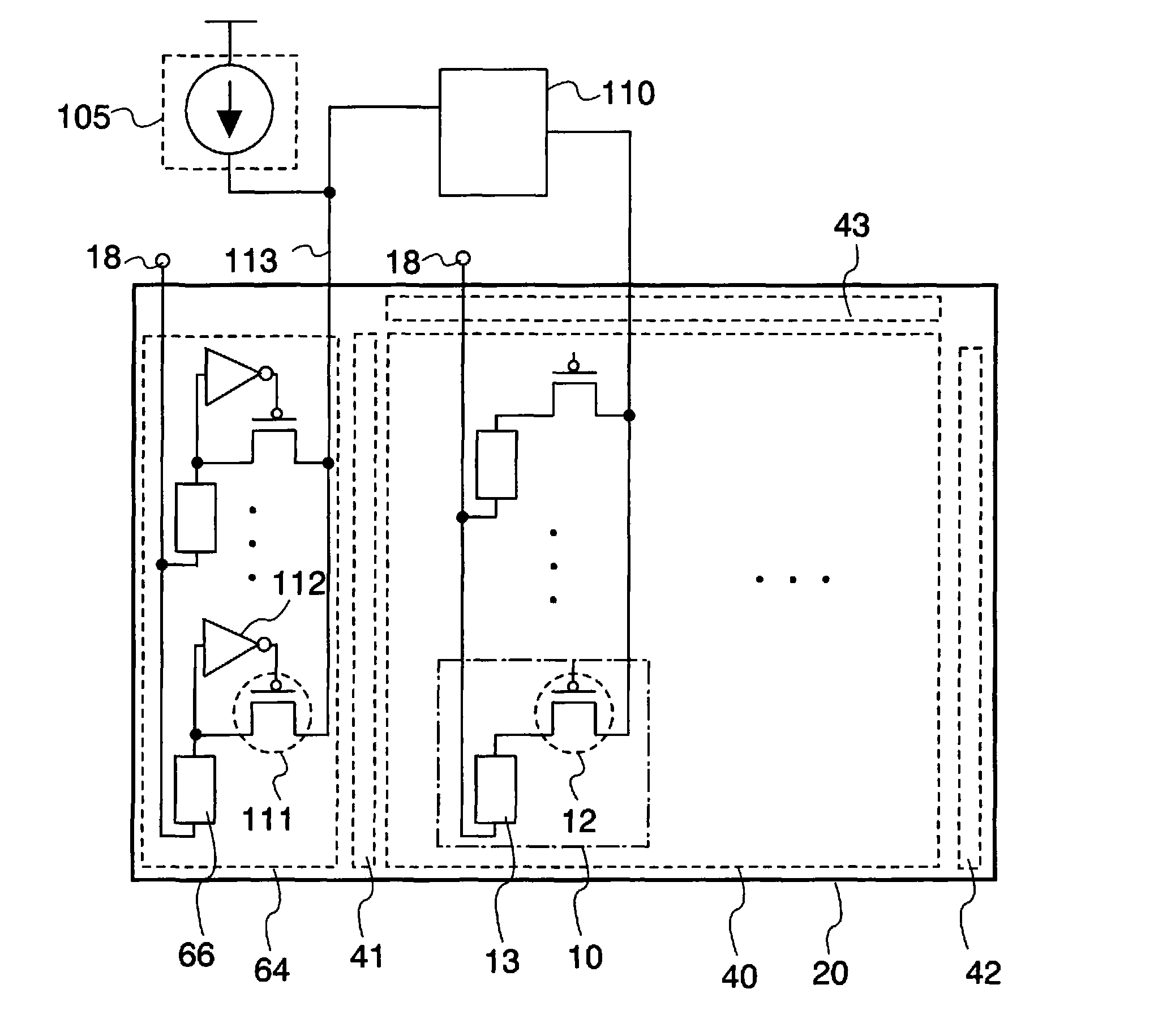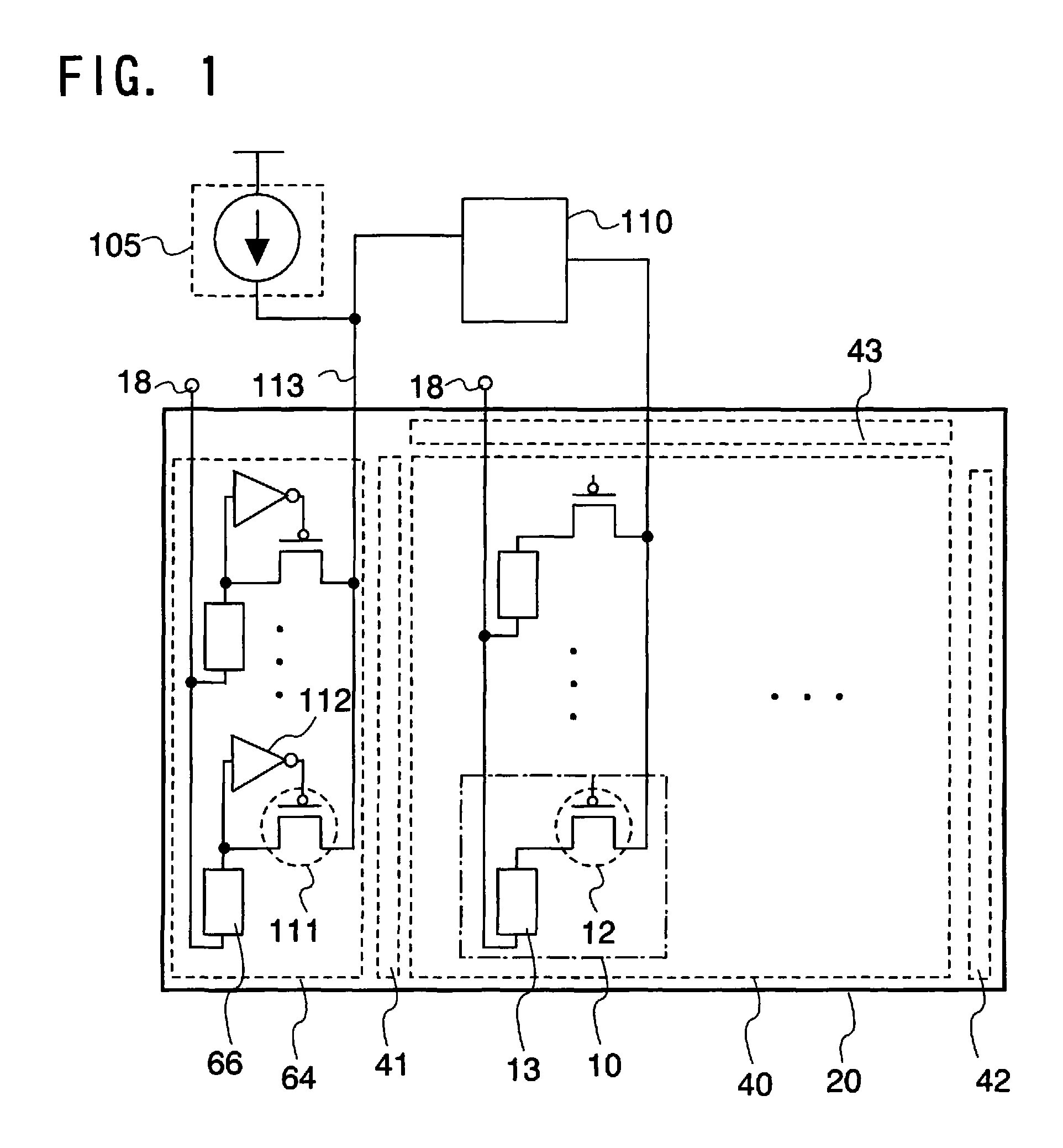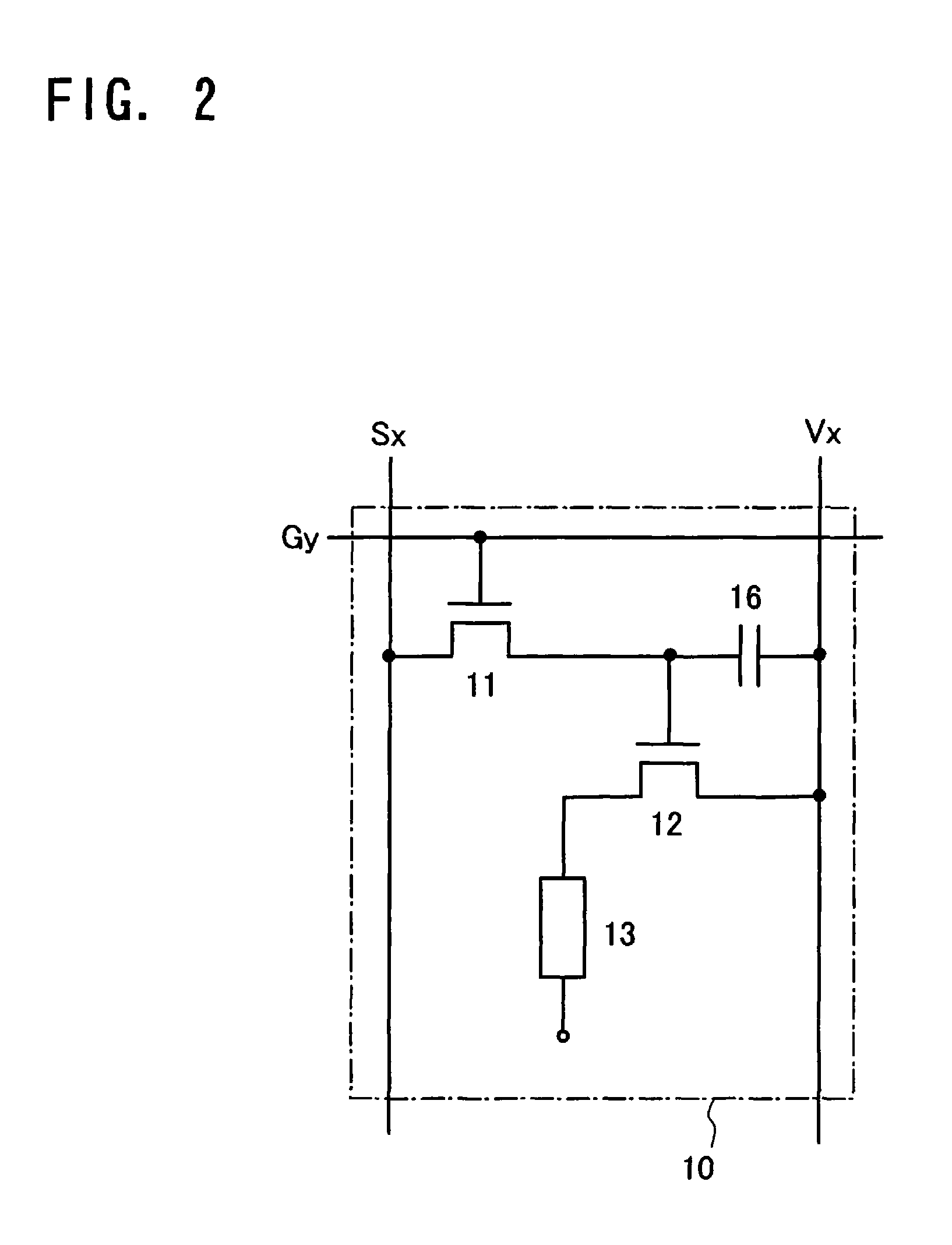Light emitting device and electronic apparatus
a technology of light emitting devices and electronic devices, applied in static indicating devices, electroluminescent light sources, instruments, etc., can solve problems such as deformation or initial defects, and achieve the effect of increasing the viewing angl
- Summary
- Abstract
- Description
- Claims
- Application Information
AI Technical Summary
Benefits of technology
Problems solved by technology
Method used
Image
Examples
embodiment mode 1
[0090] Described in this embodiment mode is a structure of a light emitting device having a monitoring light emitting element.
[0091]FIG. 1 shows a pixel portion 40, a signal line driver circuit 43, a first scan line driver circuit 41, a second scan line driver circuit 42, and a monitor circuit 64, which are provided on an insulating substrate 20.
[0092] The pixel portion 40 includes a plurality of pixels 10 each of which has a light emitting element 13 and a transistor (hereinafter referred to as a driving transistor) 12 that is connected to the light emitting element 13 and has a function of controlling current supply. The light emitting element 13 is connected to a power supply 18 denoted by a circle. The structure of the pixel 10 is more specifically described in the following embodiment mode.
[0093] The monitor circuit 64 includes a monitoring light emitting element 66, a transistor (hereinafter referred to as a monitor controlling transistor) 111 connected to the monitoring li...
embodiment mode 2
[0133] Described in this embodiment mode are configuration and operation of a circuit for turning a monitor controlling transistor off when a monitoring light emitting element is short-circuited, which is different from the circuit described in the aforementioned embodiment mode.
[0134] The monitor circuit 64 shown in FIG. 6A includes a first P-channel transistor 80, a second N-channel transistor 81 that has a gate electrode in common with the first transistor and is connected in parallel to the first transistor, and a third N-channel transistor 82 that is connected in series to the second transistor. The monitoring light emitting element 66 is connected to the gate electrode of the first and second transistors 80 and 81. The gate electrode of the monitor controlling transistor 111 is connected to an electrode at which the first and second transistors 80 and 81 are connected to each other. Other configurations are similar to those of the monitor circuit 64 shown in FIGS. 5A and 5B. ...
embodiment mode 3
[0143] In the invention, a reverse bias voltage can be applied to a light emitting element and a monitoring light emitting element. Described in this embodiment mode is the case where a reverse bias voltage is applied.
[0144] If it is assumed that a forward bias voltage is a voltage applied when the light emitting element 13 and the monitoring light emitting element 66 emit light, a reverse bias voltage means a voltage obtained by inverting a High potential and a Low potential of the forward bias voltage. When specifically described using the monitoring light emitting element 66, a potential lower than that of the power supply 18 is applied to the monitor line 113 so that the potentials of the anode electrode 66a and the cathode electrode 66c are inverted.
[0145] Specifically, as shown in FIG. 16, the potential of the anode electrode 66a (anode potential: Va) and the potential of the cathode electrode 66c (cathode potential: Vc) are inverted. At this time, the potential (Vi13) of th...
PUM
 Login to View More
Login to View More Abstract
Description
Claims
Application Information
 Login to View More
Login to View More - R&D
- Intellectual Property
- Life Sciences
- Materials
- Tech Scout
- Unparalleled Data Quality
- Higher Quality Content
- 60% Fewer Hallucinations
Browse by: Latest US Patents, China's latest patents, Technical Efficacy Thesaurus, Application Domain, Technology Topic, Popular Technical Reports.
© 2025 PatSnap. All rights reserved.Legal|Privacy policy|Modern Slavery Act Transparency Statement|Sitemap|About US| Contact US: help@patsnap.com



